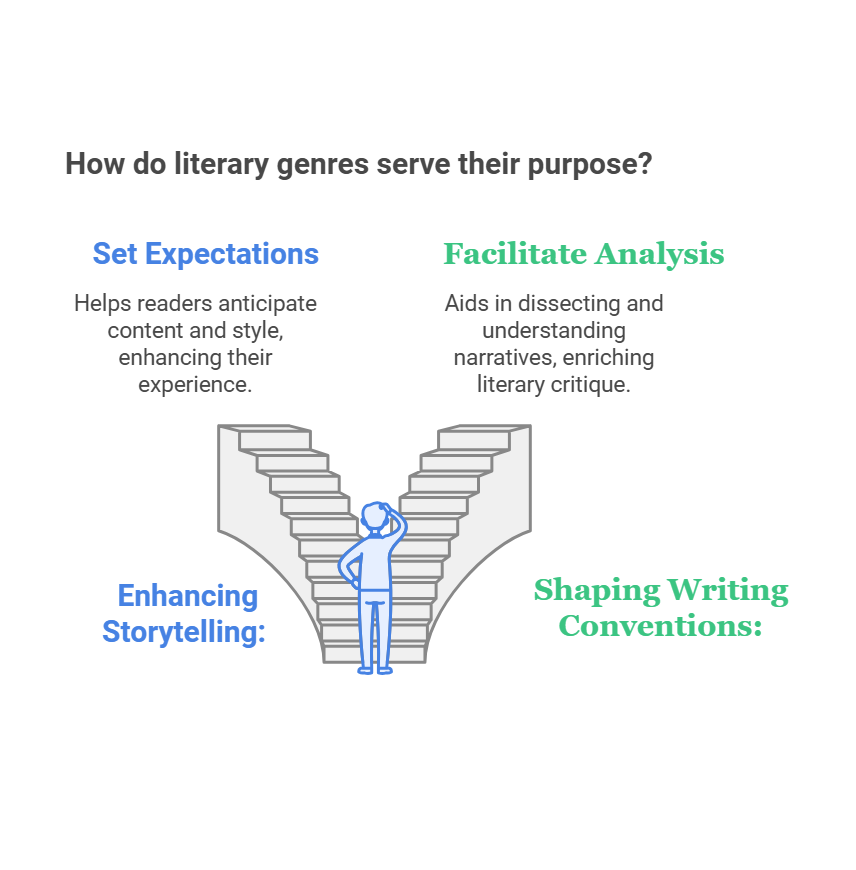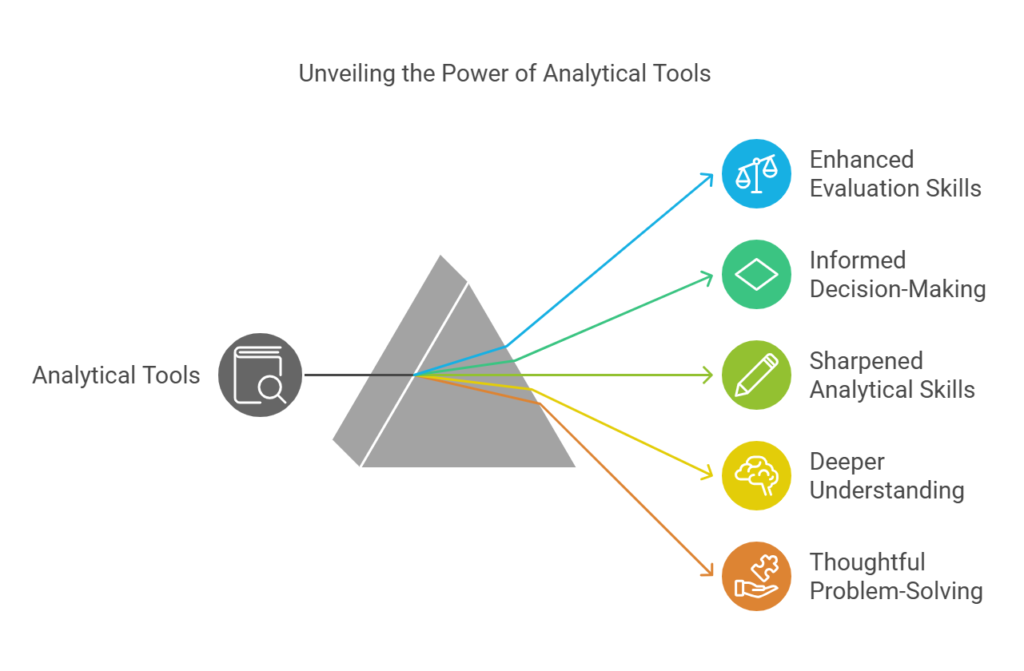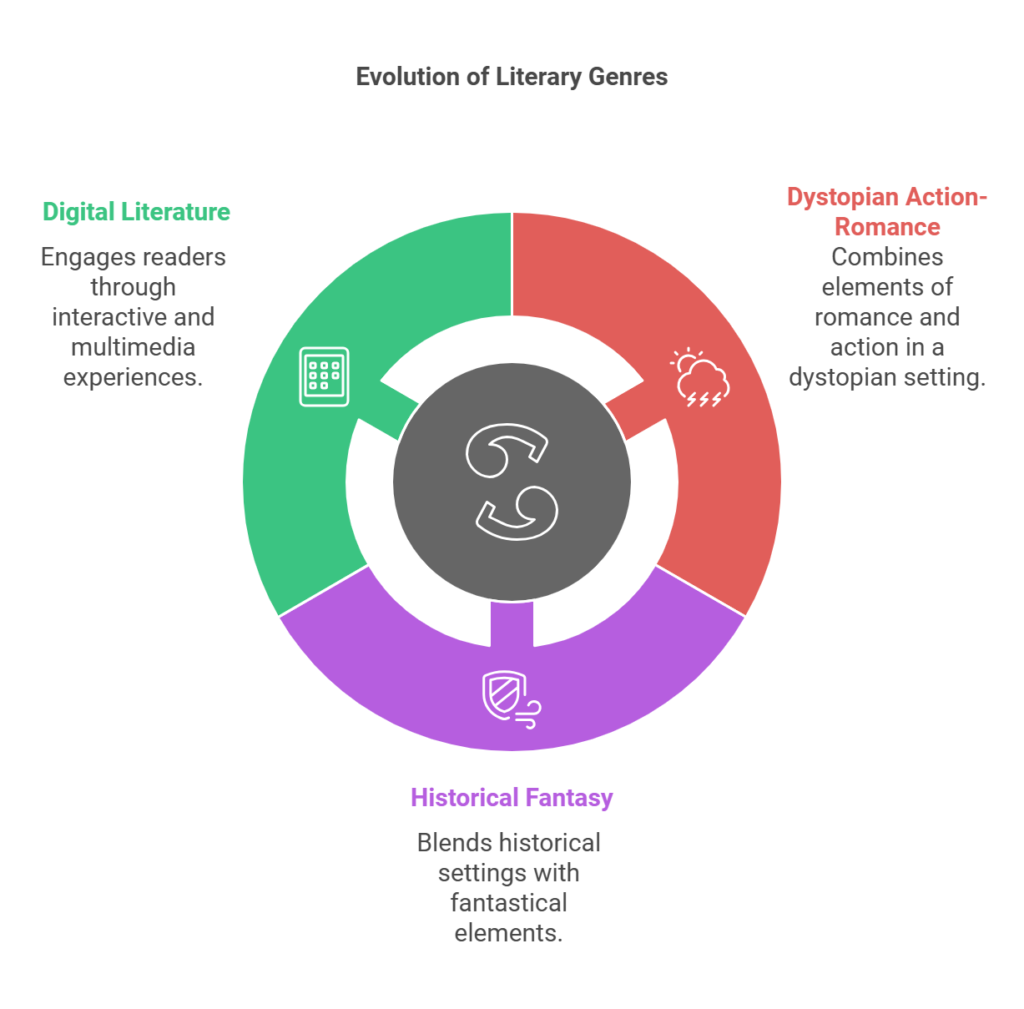Literary genres classify types of literature based on shared characteristics such as style, structure, themes, and forms. These categories help readers and writers understand and analyze literary works effectively. Recognizing a genre provides insights into the tone, narrative style, and thematic focus, making literature more accessible and engaging.

Why Are Literary Genres Important?
Understanding literary genres is essential for both readers and writers because:
- Setting Expectations: Genres guide readers on what to expect from a piece of literature. For instance, a science fiction novel promises imaginative technology, while a romance novel focuses on emotional relationships.
- Shaping Writing Conventions: Writers use genre conventions as a roadmap to structure their stories and communicate effectively with readers.
- Facilitating Literary Analysis: Genres provide a lens through which literary works can be studied. For example, analyzing historical fiction often involves examining the accuracy of its historical portrayal.
- Enhancing Storytelling: Genres shape how themes, characters, and plots are developed. A mystery novel, for example, prioritizes suspense and gradual revelation of clues.

The Different Types of Literary Genres
Literary works are broadly categorized into four main genres, each with distinct characteristics and subgenres:
Fiction
Fiction involves imaginative storytelling that isn’t strictly based on real events. It emphasizes creativity and emotional resonance.
Key Subgenres:
- Mystery: Stories that revolve around solving a puzzle or crime, like The Girl with the Dragon Tattoo.
- Fantasy: Narratives set in imaginative worlds featuring magic or mythical beings, such as Harry Potter.
- Romance: Literature focusing on love and relationships, like Pride and Prejudice.
- Science Fiction: Speculative tales exploring futuristic or technological themes, such as Dune.
Nonfiction
Nonfiction encompasses works based on factual events, aiming to educate, inform, or document reality.
Key Subgenres:
- Memoirs: Personal narratives detailing specific experiences, like The Diary of Anne Frank.
- Biographies: Detailed accounts of an individual’s life, such as Steve Jobs by Walter Isaacson.
- Essays: Analytical or reflective short pieces, such as E.M. Forster’s What I Believe.
- Documentary-Style Books: Books exploring broad topics with factual depth, like Sapiens by Yuval Noah Harari.
Drama
Drama includes literature written for performance, using dialogue and action to narrate its story.
Key Subgenres:
- Tragedy: Works that depict human suffering, often leading to a downfall, like Hamlet.
- Comedy: Playful and humorous narratives, as seen in A Midsummer Night’s Dream.
- Musical Drama: Stories combining music and drama, such as Les Misérables.
Poetry:
Poetry is a form of literature that uses rhythm, compact language, and imagery to evoke emotions and ideas.
Key Subgenres:
- Haiku: A three-line poem following a 5-7-5 syllable structure, originating from Japan.
- Sonnets: 14-line poems with a strict rhyme scheme, exemplified by Shakespearean Sonnets.
- Free Verse: Poems without a fixed form or rhyme, like Whitman’s Leaves of Grass.
- Epic Poetry: Long, narrative poems about heroic deeds, such as The Iliad.

Subgenres and Their Impact on Storytelling
Subgenres provide depth and specificity, allowing writers to cater to varied reader preferences.
Fantasy Subgenres:
- Epic Fantasy: Focuses on grand, sweeping adventures in magical worlds, as in The Wheel of Time.
- Urban Fantasy: Combines magical elements with modern settings, like The Dresden Files.
Horror Subgenres:
- Psychological Horror: Explores internal fears and mental instability, as in The Shining.
- Gothic Horror: Features dark, mysterious, and supernatural elements, like Dracula.
Romance Subgenres:
- Historical Romance: Love stories set in historical contexts, such as Outlander.
- Romantic Suspense: Combines romance with thrilling, suspenseful plots, like Gone Girl.
Science Fiction Subgenres:
- Cyberpunk: Focuses on advanced technology in dystopian settings, as in Neuromancer.
- Dystopian: Explores grim, controlled societies, such as in 1984.

How Do Literary Genres Shape Storytelling?
Genres shape storytelling conventions, influencing pacing, themes, and character arcs. They guide writers in crafting stories and help readers interpret them.
Examples:
- Fantasy: Imaginative worlds with magical elements, like The Lord of the Rings.
- Romance: Emotional conflicts and relationships, as in Me Before You.
- Historical Fiction: Merging real historical events with fictional elements, as in Burnt Shadows by Kamila Shamsie traces the aftermath of World War II, the Partition of India, and the post-9/11 world, blending historical insight with profound emotional depth.
How Are Literary Genres Used in Education?
In classrooms, literary genres:
- Help students analyze texts based on structure, themes, and techniques.
- Encourage critical thinking by comparing works within or across genres.
- Provide historical and cultural context, such as examining Victorian novels to understand 19th-century England.
For instance:
- Drama classes might focus on Shakespeare’s tragedies like Macbeth.
- Poetry lessons may highlight the use of meter and symbolism in Robert Frost’s works.

The Role of Literary Genres in Criticism
Genres are vital for literary criticism because they:
- Provide a framework to analyze a text’s adherence to or deviation from conventions.
- Allow critics to compare works, such as evaluating a contemporary dystopian novel against classics like Brave New World.
- Facilitate discussions on the evolution of genres, such as how modern science fiction incorporates themes of climate change.
The Evolution of Literary Genres
Literary genres constantly adapt to cultural shifts and technological advancements. Modern literature often blends genres to create unique narratives.
Examples of Evolving Genres:
- Dystopian Action-Romance: A subgenre that combines dystopian settings, action-packed narratives, and romantic subplots. It explores themes of societal collapse, authoritarian regimes, and individual rebellion while intertwining personal relationships.
- Example: The Hunger Games portrays a dystopian society where survival, rebellion, and a love triangle shape the story.
- Historical Fantasy: This genre blends historical settings with magical or fantastical elements. It retains the authenticity of a specific historical period while integrating myths, magic, or other supernatural features.
- Example: The Night Circus mixes a Victorian-era backdrop with a magical competition, merging history and fantasy.
- Digital Literature:A modern genre that uses digital platforms to create interactive storytelling. It includes multimedia works, hypertext fiction, and fanfiction that reshape traditional literary conventions by integrating reader participation, visual elements, and nonlinear narratives.
- Example: Interactive online novels and platforms like Wattpad allow users to engage directly with stories, breaking conventional literary boundaries.

Conclusion: Why Understanding Literary Genres Matters
Literary genres play a pivotal role in how we create, consume, and analyze literature. They guide the reader’s expectations, provide writers with a creative foundation, and offer critics a lens for analysis. By exploring the diversity of literary genres, readers can deepen their appreciation of literature and its impact on society.
Whether you’re a student, writer, or casual reader, understanding genres unlocks a richer literary experience and fosters a deeper connection with stories from around the world.